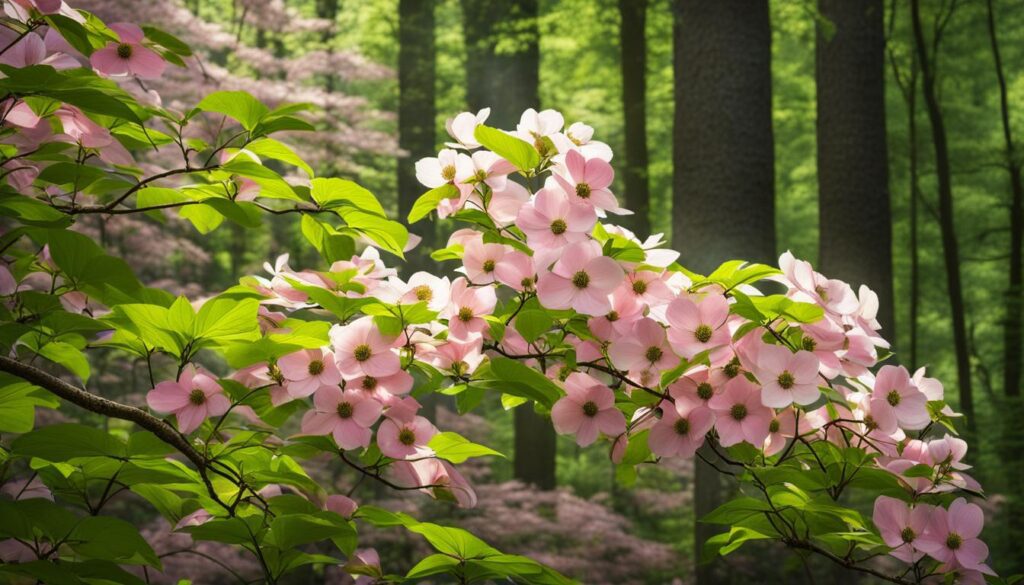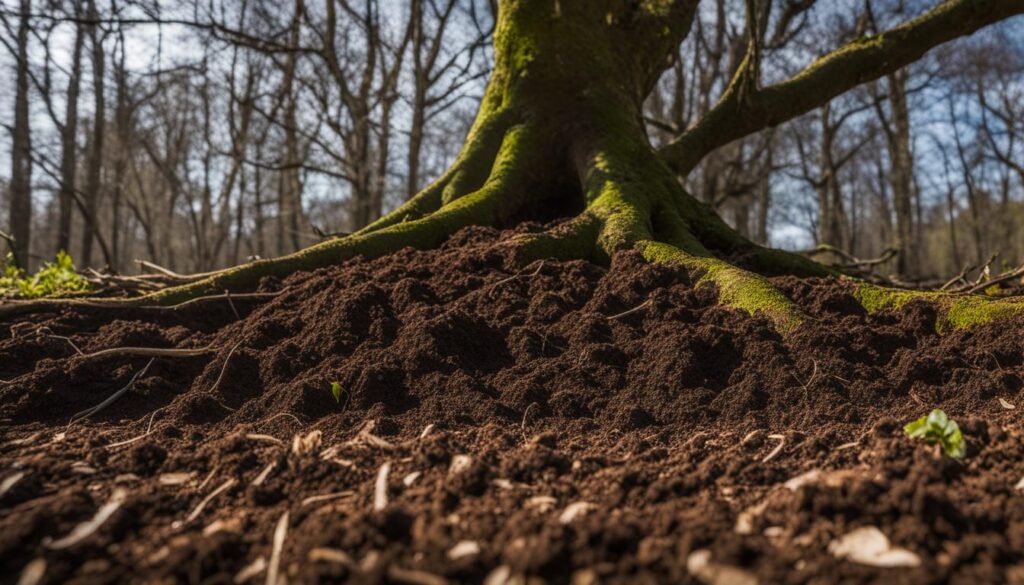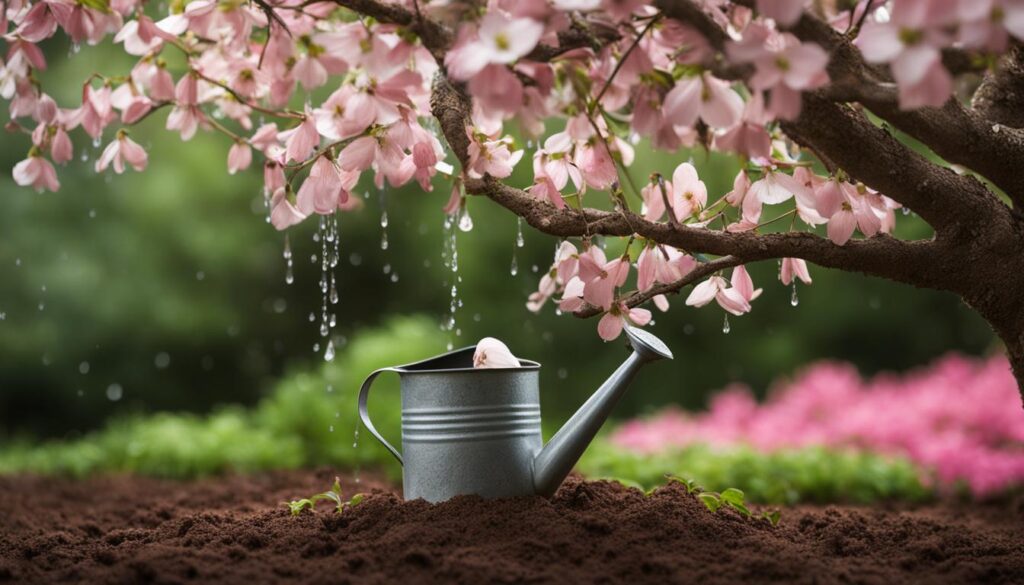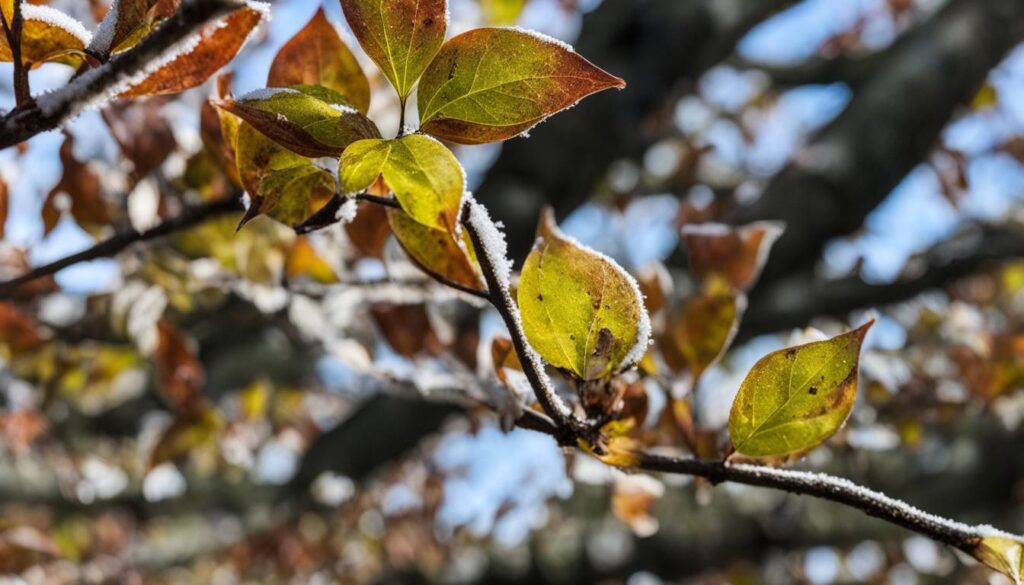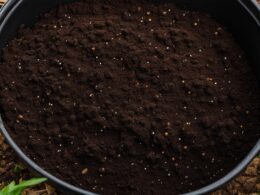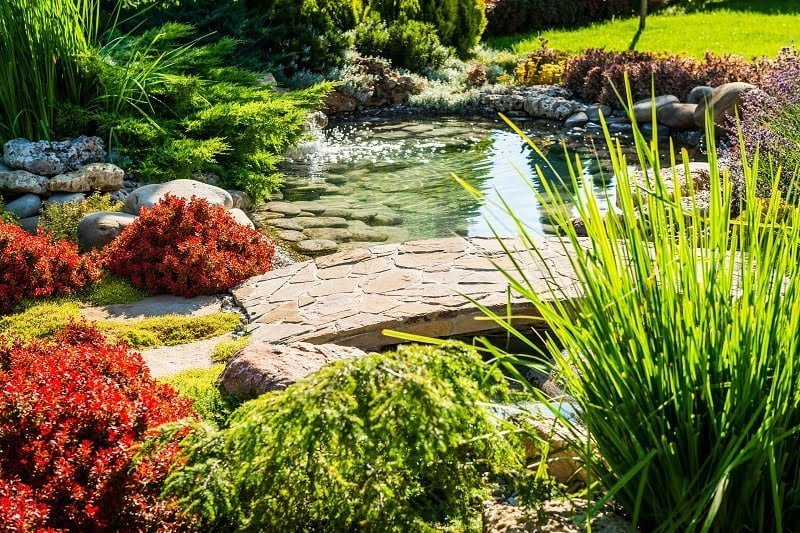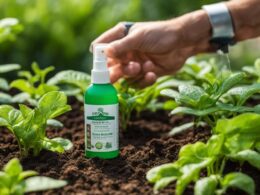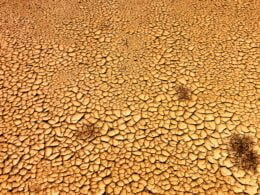Are you looking for the best fertilizer for your dogwood trees? Look no further than Holly Tone! Holly Tone is an acid-rich fertilizer that is highly recommended for fertilizing dogwood trees. It not only helps them thrive but also enhances their disease resistance and promotes healthy growth. By using Holly Tone in early spring and mid-summer, along with maintaining a mulch circle to reduce competition from grass, you can ensure the optimal health and blooming of your beloved dogwood trees.
Post Summary
- Holly Tone is an excellent fertilizer for dogwood trees, providing essential nutrients for optimal growth and blooming.
- Using Holly Tone in early spring and mid-summer can enhance the health and disease resistance of dogwood trees.
- Maintaining a mulch circle around the base of the tree reduces competition from grass and helps maintain moisture in the soil.
- Proper fertilization with Holly Tone, along with other care practices like watering and pruning, can ensure the optimal health and growth of dogwood trees.
- Consulting with a local Extension agent can help in identifying and controlling pests and diseases that may affect dogwood trees.
Tips for Growing Dogwood Trees
When it comes to growing dogwood trees, proper care is essential to ensure their healthy growth and longevity. Here are some valuable tips to help you achieve optimal results:
- Choose the right location: Dogwood trees thrive in partial shade, so select a spot that provides at least 60% sunlight per day. This will protect them from scorching in full sun while allowing them to receive the necessary light for photosynthesis.
- Mind the planting depth: Take care not to plant the trees too deep. Place the root ball level with or slightly above the soil surface to prevent suffocating the roots. This will ensure proper oxygen and moisture exchange for healthy growth.
- Water consistently: Young dogwood trees require regular watering, particularly during dry periods. Aim for weekly watering, ensuring the soil remains evenly moist. Established trees need about 1 to 2 inches of water per week, depending on weather conditions.
- Prune with care: Pruning is crucial for maintaining the shape and health of dogwood trees. It’s best to prune during the late winter or early spring, before the flowers emerge. Remove dead, injured, or diseased branches to promote new growth and prevent the spread of diseases.
- Avoid herbicides near the roots: Applying herbicides near the exposed roots of dogwood trees can cause damage. It’s important to protect the roots and avoid chemical interference that can hinder their growth. Instead, use alternative methods for weed control, such as mulching.
By following these tips, you can create an ideal environment for the healthy growth of your dogwood trees. Remember to provide adequate shade, monitor the planting depth, water consistently, prune with care, and avoid herbicides near the roots. With proper care, your dogwood trees will flourish and bring beauty to your landscape for years to come.
Choosing the Right Fertilizer for Dogwood Trees
When it comes to fertilizing your dogwood trees, it is crucial to choose the right fertilizer that meets their specific nutrient needs. Conducting a soil test is a helpful starting point as it can provide valuable insights into the nutrient requirements of the soil. By understanding the soil composition, you can select a fertilizer that addresses any deficiencies and ensures the optimal growth and health of your dogwood trees.
For dogwood trees, fertilizers with a 12-4-8 or 16-4-8 ratio are recommended. These ratios refer to the nitrogen (N), phosphorus (P), and potassium (K) content in the fertilizer. Nitrogen promotes foliage growth, while phosphorus supports root development and flowering. Potassium helps enhance overall plant vigor and disease resistance. Choosing a fertilizer with these balanced ratios will provide the necessary nutrients for your dogwood trees.
It is important to note that young dogwood trees should not be over-fertilized. Excessive nitrogen can lead to excessive vegetative growth, making the tree more susceptible to disease and pests. Therefore, opt for a fertilizer with a lower nitrogen content when fertilizing young dogwoods. A slow-release fertilizer can also be a good choice as it gradually provides nutrients over an extended period, reducing the risk of nutrient burn.
| Fertilizer Ratio | Nitrogen (N) | Phosphorus (P) | Potassium (K) |
|---|---|---|---|
| 12-4-8 | 12% | 4% | 8% |
| 16-4-8 | 16% | 4% | 8% |
Remember, providing the right fertilizer for your dogwood trees is essential for their overall health and vitality. By considering their specific nutrient needs and using the appropriate fertilizer ratio, you can ensure that your dogwoods receive the necessary nourishment for beautiful blooms and robust growth.
Using Bone Meal Fertilizer for Dogwood Trees
Dogwood trees are known for their beautiful blooms, and using the right fertilizer can help enhance their flowering potential. One organic option that can be beneficial for dogwood trees is bone meal fertilizer. Bone meal is derived from steamed animal bones and is rich in calcium and phosphorus, two essential nutrients for plant growth.
Bone meal fertilizer can help promote blooming in dogwood trees by providing the necessary nutrients for flower development. Phosphorus, in particular, plays a vital role in the production of flowers and fruits. By incorporating bone meal into the soil around your dogwood tree, you can support its blooming process and enhance its overall health and vitality.
To use bone meal fertilizer for your dogwood tree, simply sprinkle a handful of the fertilizer evenly around the base of the tree, avoiding direct contact with the trunk. Gently work the bone meal into the top few inches of soil and water thoroughly. Repeat this process once or twice a year, ideally in early spring and late summer.
The Benefits of Organic Fertilizers
Using organic fertilizers like bone meal has several advantages. First, organic fertilizers are typically slow-release, which means they release nutrients gradually over time, providing a consistent supply to the tree. This slow-release action helps prevent nutrient leaching and reduces the risk of over-fertilization.
Second, organic fertilizers improve the soil structure and increase its ability to retain moisture. This can be especially beneficial for dogwood trees, as they prefer well-drained soil with adequate moisture levels.
Lastly, organic fertilizers are environmentally friendly and promote the overall health of the soil ecosystem. They encourage the growth of beneficial microorganisms and earthworms, which contribute to soil fertility and nutrient availability.
| Advantages of Bone Meal Fertilizer | Disadvantages of Bone Meal Fertilizer |
|---|---|
|
|
Overall, bone meal fertilizer can be an effective organic option for promoting blooming in dogwood trees. However, it is essential to perform a soil test before applying bone meal to ensure the pH level is suitable for absorption. Additionally, it’s important to follow the recommended application guidelines and consider the individual needs of your dogwood tree to achieve the best results.
Proper Fertilization Techniques for Dogwood Trees
Proper fertilization techniques are crucial for the health and vitality of your dogwood trees. By providing the right amount of fertilizer at the appropriate times, you can ensure optimal growth and blooming. Here are some key guidelines to follow when fertilizing your dogwood trees:
- Dosage: The amount of fertilizer needed depends on the size and age of the tree. For young dogwood trees, apply one level tablespoonful of fertilizer in March and July. Established trees require 1 cup of fertilizer per inch of trunk diameter in the same months.
- Fertilizer Placement: Evenly spread the fertilizer around the tree, starting at least 6 inches away from the trunk and extending beyond the drip line. Avoid concentrating the fertilizer near the trunk, as it can lead to root burn.
- Timing: Fertilize your dogwood trees in early spring and mid-summer to support growth and flowering. Applying fertilizer during periods of active growth ensures that the nutrients are readily absorbed by the tree.
Pruning also plays a crucial role in maintaining the health and form of dogwood trees. By removing dead or damaged branches, you can prevent the spread of diseases and promote new growth. Prune your dogwood trees during the late winter or early spring before the flowers emerge. Remember to sterilize your pruning tools to prevent the spread of pathogens.
Proper fertilization and pruning techniques are essential for the long-term success of your dogwood trees. By following these guidelines, you can create an optimal environment that promotes healthy growth, abundant blooms, and overall tree vigor.
| Fertilizer Dosage | Tree Size | Amount of Fertilizer | Application Times |
|---|---|---|---|
| Young Trees | 1-2 feet | 1 level tablespoonful of fertilizer | March and July |
| 2-4 feet | 2 level tablespoonfuls of fertilizer | March and July | |
| Established Trees | 4-6 feet | 4 cups of fertilizer | March and July |
| Above 6 feet | 1 cup of fertilizer per inch of trunk diameter | March and July |
Ideal Soil Conditions for Dogwood Trees
Creating the ideal soil conditions is essential for the health and vitality of dogwood trees. These trees thrive in well-drained soil that is high in organic matter and has a slightly acidic to neutral pH. By ensuring the right soil conditions, you can provide the optimal environment for your dogwood trees to grow and flourish.
Soil Drainage and Organic Matter
Good soil drainage is crucial for dogwood trees as they do not tolerate standing water. Ensure that the soil around your trees is well-drained to prevent waterlogging and root rot. Adding organic matter, such as compost or well-rotted manure, can improve soil structure and drainage. It also enriches the soil with essential nutrients and encourages beneficial microbial activity, promoting healthy root development.
Soil pH and Nutrient Availability
The pH level of the soil directly affects the availability of nutrients to dogwood trees. Aim for a slightly acidic to neutral pH range of 5.5 to 6.0 for optimal growth. This range allows the tree to access nutrients effectively. Conducting a soil test can help you determine the current pH level of your soil and any necessary adjustments. If the pH is too high or too low, you can amend the soil with appropriate materials, such as elemental sulfur to lower pH or lime to raise pH.
Recommended Soil Conditions for Dogwood Trees
| Factor | Ideal Range |
|---|---|
| Soil Drainage | Well-drained |
| Organic Matter | High content |
| Soil pH | 5.5 to 6.0 |
Remember to regularly monitor soil conditions and make any necessary adjustments to ensure the continued health and vigor of your dogwood trees. With the right soil conditions, your trees will thrive and reward you with their stunning blooms.
Watering Recommendations for Dogwood Trees
Proper watering is crucial for the health and vitality of dogwood trees. By ensuring adequate soil moisture, you can help your trees withstand drought conditions and thrive in various climates. Here are some watering recommendations to keep your dogwood trees hydrated and healthy.
1. Determine the Moisture Needs
It’s important to understand the moisture needs of your dogwood trees. Young trees require more frequent watering, typically once a week. Established trees, on the other hand, need about 1 to 2 inches of water per week. Always monitor the soil moisture level and adjust your watering schedule accordingly.
2. Water Deeply and Infrequently
When watering your dogwood trees, it’s best to water deeply and infrequently. This encourages deep root growth and helps the tree become more drought-tolerant. Apply water slowly and evenly around the root zone, which extends beyond the canopy of the tree. Avoid watering near the trunk as this can lead to rot or fungal diseases.
Additionally, consider using a soaker hose or drip irrigation system to deliver water directly to the roots. These methods help minimize water waste and ensure efficient water absorption.
3. Mulch and Monitor
Applying a layer of organic mulch around the base of your dogwood trees can help retain soil moisture and regulate temperature. Mulch also reduces weed growth and protects the roots from extreme hot or cold temperatures. Aim for a 2 to 4-inch layer of mulch, keeping it 2 to 4 inches away from the trunk.
Regularly monitor the soil moisture to ensure it remains consistently moist but not waterlogged. Use a moisture meter or simply stick your finger into the soil. If it feels dry at a depth of 2 to 3 inches, it’s time to water.
| Signs of Underwatering: | Signs of Overwatering: |
|---|---|
| – Wilting leaves | – Yellowing leaves |
| – Leaf drop | – Fungal diseases |
| – Dry, cracked soil | – Root rot |
By following these watering recommendations, you can ensure that your dogwood trees remain adequately hydrated and are able to withstand periods of drought. Remember to adjust your watering schedule based on the specific needs of your trees and the local climate. With proper watering, your dogwood trees will thrive and beautify your landscape for years to come.
Pruning Guidelines for Dogwood Trees
Proper pruning is essential for maintaining the health and appearance of your dogwood trees. By following the correct pruning guidelines, you can ensure that your trees remain beautiful and vibrant year after year.
Pruning Timing: It is recommended to prune dogwood trees in late winter or early spring, before the flowers begin to emerge. This timing allows for optimal healing and reduces the risk of disease or pest infestation. Avoid pruning in the fall, as this can leave the trees vulnerable to winter damage.
Pruning Cuts: When making pruning cuts, it is important to follow the proper technique to minimize damage to the tree. Make a cut one-third of the way through the branch, about 12 to 18 inches from the trunk. Then, make a second cut just beyond the first cut to remove the branch entirely. Finally, make a third cut at the swollen branch collar to remove any remaining stub. This three-cut technique promotes healthy healing and prevents the risk of disease.
| Pruning Guidelines: | Timing: | Cuts: |
|---|---|---|
| Prune in late winter or early spring | Before the flowers emerge | Make three cuts: |
| Avoid pruning in the fall | To prevent winter damage | 1. Cut one-third of the way through the branch, 12-18 inches from the trunk |
| 2. Make a second cut just beyond the first cut to remove the branch | ||
| 3. Make a third cut at the swollen branch collar to remove any remaining stub |
Pruning Tools: It is essential to use clean and sharp pruning tools to prevent the spread of disease. Before making each cut, sterilize your pruning tools with rubbing alcohol or a solution of one part bleach to nine parts water. This simple step helps protect the overall health of your dogwood trees.
Remember, proper pruning techniques, including timing and cuts, are crucial for maintaining the health, appearance, and blooming of your dogwood trees. By following these guidelines, you can enjoy the beauty and benefits of these magnificent trees for years to come.
Common Pests and Diseases of Dogwood Trees
Just like any other plant, dogwood trees can be susceptible to pests and diseases that can potentially harm their health and vitality. Being aware of these common issues and taking proactive measures can help ensure the well-being of your dogwood trees. Here are some of the most prevalent pests and diseases that affect dogwood trees:
Pests
- Dogwood Borer: This destructive pest tunnels into the trunk and branches of dogwood trees, causing structural damage.
- Twig Borer: These insects feed on the young twigs of dogwood trees, leading to stunted growth and dieback.
- Club Gall: This disease causes abnormal growths, or “galls,” on the branches and twigs of dogwood trees, affecting their overall health and appearance.
Diseases
- Powdery Mildew: This fungal disease creates a powdery white coating on the leaves, leading to defoliation and reduced vigor.
- Anthracnose: This fungal disease causes leaf spots, twig dieback, and cankers on dogwood trees, potentially leading to their decline.
- Crown Gall: This bacterial disease causes swollen growths at the base of the trunk, inhibiting the tree’s ability to absorb nutrients and water.
- Trunk Canker: This disease results in sunken, discolored areas on the trunk, weakening the tree’s structure and making it more susceptible to other issues.
To effectively manage these pests and diseases, it is essential to identify the issue correctly and take appropriate measures. Consult with a local Extension agent or a professional arborist for accurate pest identification and control methods specific to your region. Early detection, regular monitoring, and proper cultural practices such as pruning, sanitation, and maintaining overall tree health can help prevent and manage pest and disease issues.
| Pests | Diseases |
|---|---|
| Dogwood Borer | Powdery Mildew |
| Twig Borer | Anthracnose |
| Club Gall | Crown Gall |
| Trunk Canker |
Being proactive in addressing pest and disease issues can help maintain the beauty and vitality of dogwood trees in your landscape. Remember to regularly inspect your trees, implement appropriate control measures, and maintain a healthy growing environment to mitigate the risk of these common pests and diseases.
Conclusion
Proper care and fertilization are essential for the health and vitality of your dogwood trees. Holly-Tone, with its acid-rich composition, is a recommended fertilizer that can contribute to the optimal growth and blooming of your trees.
By following the tips for growing dogwood trees, including planting in partial shade, maintaining proper watering, and protecting the trunk from damage, you can create an ideal environment for your trees to thrive.
Choosing the right fertilizer, such as Holly-Tone, and applying it at the recommended dosage will ensure that your dogwood trees receive the necessary nutrients for healthy growth and beautiful blooms. Additionally, maintaining optimal soil conditions and pruning at the appropriate time will further contribute to the overall well-being of your trees.
Remember, by investing time and effort into proper tree care and optimal fertilization, you can enjoy the beauty and benefits of your dogwood trees for years to come.
Can Holly Tone also be used as a companion plant for Olive Trees?
Yes, Holly Tone can be used as a companion plant for olive trees. The acidic nature of Holly Tone makes it an ideal fertilizer for olive trees, as it helps in maintaining the soil pH level. Additionally, it provides essential nutrients to the surrounding soil, benefiting the growth of olive trees.
FAQ
Is Holly Tone good for dogwood trees?
Yes, Holly Tone is a recommended fertilizer for dogwood trees. It helps them thrive, resist disease, and promote healthy growth.
What are some tips for growing dogwood trees?
Some tips for growing dogwood trees include planting them in partial shade, avoiding planting too deep, watering young trees weekly, pruning during autumn, and protecting the trunk from damage.
How do I choose the right fertilizer for dogwood trees?
It is important to consider the specific nutrient needs of dogwood trees. A soil test can help determine the requirements. Fertilizers with a 12-4-8 or 16-4-8 ratio are recommended.
Can I use bone meal fertilizer for dogwood trees?
Yes, bone meal fertilizer can be used to promote blooming in dogwood trees. It is rich in calcium and phosphorus, which are essential for growth. However, a soil test is advised before application.
What are the proper fertilization techniques for dogwood trees?
The dosage of fertilizer depends on the size and age of the tree. For young trees, use one level tablespoonful in March and July. For established trees, use 1 cup per inch of trunk diameter. Pruning also helps promote healthy growth.
What are the ideal soil conditions for dogwood trees?
Dogwood trees thrive in well-drained soil that is high in organic matter and has a slightly acidic to neutral pH. A soil test can determine the acidity before applying any fertilizer or amendments.
How should I water dogwood trees?
Young trees should be watered weekly, while established trees need about 1 to 2 inches of water per week. Adequate soil moisture is important, but overwatering should be avoided to prevent root rot.
What are the pruning guidelines for dogwood trees?
Pruning should be done in late winter or early spring before flowers emerge. Remove dead, injured, and diseased branches. Make three cuts to minimize damage and avoid the use of pruning sealers or wound dressings.
What are some common pests and diseases of dogwood trees?
Common pests include dogwood borer, twig borer, and club gall. Diseases such as powdery mildew, anthracnose, crown gall, and trunk canker can also affect dogwood trees. Proper identification and control methods are important.
How does Holly Tone and proper tree care contribute to the optimal health of dogwood trees?
Holly Tone, along with proper tree care techniques, helps dogwood trees thrive and produce beautiful blooms. By choosing the right fertilizer, following recommended dosage, and creating optimal soil conditions, the health and growth of dogwood trees can be ensured.






